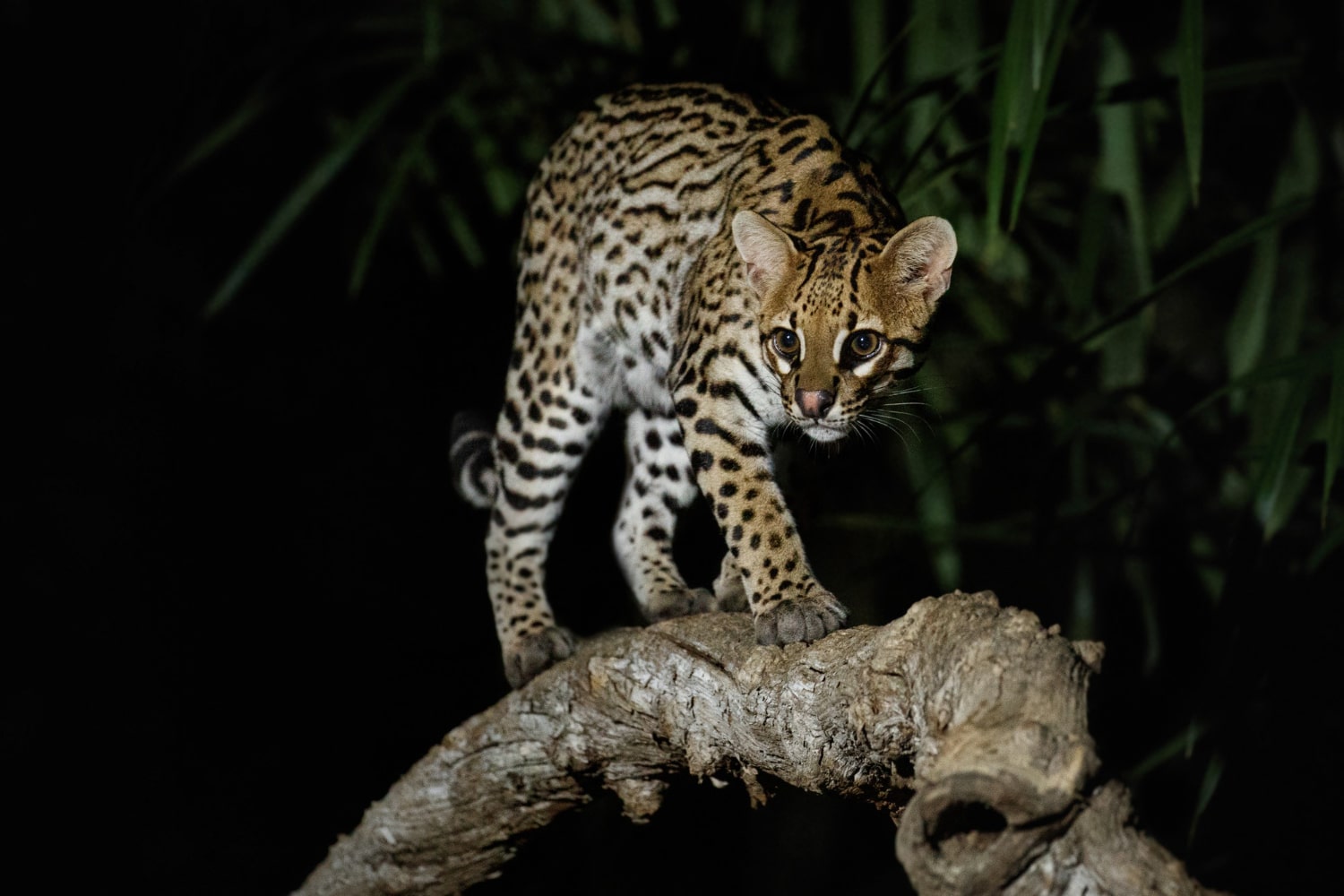The serval is a slender and agile predator that inhabits the savannas and wet grasslands of Africa. With its graceful appearance, long legs, and spotted coat, it resembles a cross between a domestic cat and a small leopard. Despite its relatively modest size, the serval is known for its extraordinary jumping abilities and exceptional hunting skills. Although still not widely studied, the serval remains a fascinating species that captures the interest of wildlife researchers and nature lovers alike. Below is a collection of interesting and educational facts about servals you may not have known.
- The serval is closely related to the caracal and the lynx, yet it occupies its own distinct ecological niche. Its elongated body, extremely long legs, and large rounded ears are specifically adapted to life in tall grass. This build allows it to move silently while keeping a clear view of its surroundings.
- Proportionally, the serval has the longest legs of any wild cat relative to body size. This gives it a significant advantage in high grass, helping it spot prey from a distance. The long limbs also make it exceptionally fast and agile during hunts.
- One of the serval’s most impressive abilities is its vertical leap. It can jump up to three meters straight into the air to catch birds in flight. This unique hunting technique makes the serval one of the most efficient hunters in the feline world.
- The serval’s large ears are not just for show — they are highly sensitive and play a crucial role in hunting. It can hear the movement of small animals such as mice and frogs even beneath the surface of grass or soil. Often, a serval locates its prey by sound before even seeing it.
- Servals are solitary animals and fiercely territorial. They mark their territory using urine and scratch marks on trees. Males defend their areas from other males, while females may have overlapping territories with several males.
- Servals primarily feed on small animals. Their diet includes rodents, birds, frogs, lizards, and insects. Occasionally, they are capable of taking down larger prey such as young antelopes.
- More than 90 percent of the serval’s hunting attempts are successful, which is an exceptionally high rate for wild cats. They hunt both during the day and at night depending on environmental conditions. This adaptability increases their chances of survival.
- A serval’s fur is golden-yellow with black spots and stripes that vary from one individual to another. This coat provides excellent camouflage in dry grasslands. Each serval has a unique pattern, much like human fingerprints.
- Servals are found primarily south of the Sahara Desert in Africa. They prefer habitats near water sources such as swamps, marshes, and riverbanks. They tend to avoid deserts and extremely dry regions.
- The gestation period for a female serval lasts around 70 to 75 days. She usually gives birth to one to three kittens. The young are born blind and helpless but develop rapidly and begin exploring under their mother’s supervision within a few weeks.
- In the wild, servals live for about 10 to 12 years, while in captivity they can live up to 20 years. However, keeping a serval in captivity requires significant space, proper care, and specialized knowledge. For these reasons, servals are not suitable as typical pets.
- Although not currently classified as endangered, serval populations are declining due to habitat loss. Wetland drainage, deforestation, and urban expansion threaten their natural environment. In many countries, servals are protected by law and hunting them is prohibited.
- Servals are intelligent and capable of learning. In captivity, they can recognize feeding times, remember paths and routines, and even learn simple tasks. This indicates a high level of cognitive development.
- In some African cultures, servals are considered sacred or mystical animals. They symbolize agility, independence, and strength. In traditional beliefs, servals are sometimes seen as guardians of nature or spirits of the grasslands.
- A hybrid between a serval and a domestic cat is known as the Savannah cat. These hybrids are prized for their exotic appearance and energetic personality. Savannah cats have become increasingly popular among breeders and exotic pet enthusiasts around the world.
Servals are extraordinary predators that combine grace, intelligence, and adaptability. These fascinating facts reveal how unique and complex this African feline truly is. You may not have realized how remarkable this creature is until now. Learning about servals deepens our understanding of the natural world and highlights its incredible diversity.





